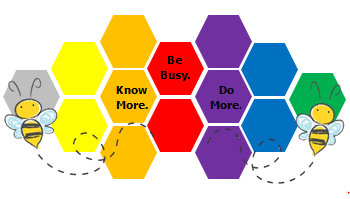Building a wall for Humpty Dumpty.


Using cams to make a moving toy.

Look what I’ve made in the wood work area!

Designing and making stable structures using anchors and braces.

Working out how to attach an axle to the chassi.

Preparing the ingredients to make vegetable soup.

We used our knowledge of frame structure to create kites.

On Inventors Day, this is what I created from my cardboard box.

On Inventors day, Reception took part in the cardboard box challenge.

An idea for a new invention on Inventors Day.

Design and Technology
What makes a good designer?
- A good designer can break down and solve problems.
- A good designer is creative.
- A good designer is innovative.
- A good designer constantly improves their work.
- A good designer is organised.
Vision
Design and Technology at Devonshire Primary Academy is an inspiring, rigorous and practical subject. Using creativity and imagination, pupils design and make products that solve real and relevant problems within a variety of contexts, considering their own and others’ needs, wants and values.
Evaluation is an integral part of the design process and allows children to re-think and improve their product; this is a key skill which they need throughout their life. They acquire a broad range of subject knowledge and Design and Technology allows children to apply the knowledge and skills learned in other subjects, particularly Maths, Science, computing and Art. They learn how to take risks, becoming resourceful, innovative, enterprising and capable citizens. Through the evaluation of past and present design and technology, they develop a critical understanding of its impact on daily life and the wider world. High-quality Design and Technology education makes an essential contribution to the creativity, culture, wealth and well-being of the nation.
Throughout school, children are taught cooking and nutrition and we provide a curriculum which encourages them to make healthy eating choices and gives them the skills they need to prepare healthy meals for themselves. Children will learn where their food comes from, how to cook, food preparation and cooking skills and techniques which develop in complexity over time. They will be taught about the principles of hygiene, nutrition, diet and health.
The curriculum for Design and Technology aims to ensure that all pupils:
- develop the creative, technical and practical expertise needed to perform everyday tasks confidently and to participate successfully in an increasingly technological world;
- build and apply a repertoire of knowledge, understanding and skills in order to design and make high-quality prototypes and products for a wide range of users and critique, evaluate and test their ideas and products and the work of others;
- select appropriate tools and techniques for making a product, whilst following safe procedures;
- design and make a range of products using a good quality finish; and
- understand and apply the principles of nutrition and learn how to cook.
How is Design and Technology Taught?
The Design and Technology curriculum is designed to help pupils form a Design and Technology schema within their long-term memories.
Schema theory states that all knowledge is organised into units. A schema is, therefore, a conceptual system for understanding knowledge.
Our Design and Technology schema is a way of organising Design and Technology semantic and procedural knowledge in a meaningful way; it is an appreciation of how facts are connected and the ways in which they are connected. It is distinct from information, which is just isolated facts that have no organisational basis or links.
Threshold concepts help form the basis of the schema. These are key concepts that underpin the subject. There are three threshold concepts in Design and Technology:
- Taking Inspiration from Design (appreciating that designers take inspiration from existing products -natural or manufactured- and use them as starting points for their design)
- Mastering Practical Techniques (demonstrating the skills needed to make high-quality products)
- Designing, Making, Evaluating and Improving (understanding the design process of ‘think, make, break, repeat’)
Curriculum Companions by Chris Quigley

Each threshold concept has facets of knowledge (knowledge categories) which help to strength the schema. Learning knowledge in each of the categories allows pupils to express and demonstrate their understanding of the threshold concept.

These threshold concepts are returned to over and over again so the pupils gradually build understanding of them.
Design and Technology at Home
There are a few ways in which you can support your child with their Design and Technology learning:
- Talk about design in the world around you. What is the product? What is the product’s purpose? Who is the intended user? Which features make it a successful design? How would you improve this design?
- Ask your child about their Design and Technology learning. Your child will have lots to tell you! (Look out for photos of their learning on Class Dojo.)
- Encourage your child to design and make things at home! Remember to celebrate the ‘break’ stage in the design process; the stage where your child evaluates and changes their design to improve it, like all good designers do! Please take photos of their creations and post them on your child’s Class Dojo portfolio so their work can be celebrated by staff and their peers in school.

